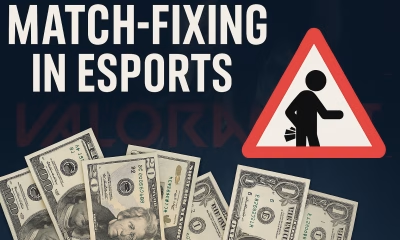General
The Demise of the Overwatch League: A Legal and Business Perspective
Activision Blizzard has announced the end of the Overwatch League, a pioneering venture in the esports industry. This article delves into the legal, financial, and strategic factors that led to the league’s downfall, reflecting on its impact on the esports landscape and the future of competitive Overwatch.

The Rise and Fall of the Overwatch League
Founding and Initial Challenges
Launched in 2016, the Overwatch League (OWL) represented an ambitious attempt to replicate traditional sports league models in esports. City-based teams competed in a structured format, including home-and-away matches, playoffs, and a world championship. Despite its innovative approach, the league encountered early financial hurdles, with franchise fees reportedly around USD 20 million, hindering its initial growth.
Pandemic Woes and Sponsorship Losses
The COVID-19 pandemic dealt a significant blow to the OWL, particularly its live-event ambitions. This setback was compounded in 2021 when allegations of discrimination and sexual misconduct within Activision Blizzard led to the withdrawal of major sponsors, further destabilizing the league’s financial foundation.
Legal and Financial Turbulence
SEC Filings and Operational Concerns
Activision Blizzard’s filings with the Securities and Exchange Commission (SEC) in May painted a grim picture. The company admitted to facing “headwinds” affecting the OWL’s operations and longevity, with potential costs and unsuccessful mitigation efforts. These disclosures signaled deeper issues within the league’s structure and viability.
Termination Clauses and Team Departures
In a later financial report, Activision Blizzard outlined a revised operating agreement, stipulating a “termination fee” of USD 6 million for teams if the league did not continue under new terms. This clause was activated following the majority of teams voting to exit the league, as reported by The Esports Advocate. The Toronto Defiant’s formal departure underscored the broader disintegration of the league.
The Aftermath and Future Outlook
Activision Blizzard’s Statement and Strategy Shift
In response to the unfolding events, Activision Blizzard confirmed the OWL’s end in its current form, hinting at an evolved direction for competitive Overwatch. The company expressed gratitude to all involved and indicated plans for a revamped esports program.
Implications for Esports Legal Landscape
The OWL’s demise raises crucial questions about the legal frameworks governing esports leagues. Contractual obligations, termination provisions, and sponsor agreements are now under scrutiny. This scenario may prompt a reevaluation of legal strategies in esports, emphasizing more sustainable and flexible models.
Potential Revival and New Formats
Despite the setback, there is speculation about a potential Overwatch league revival in 2024, possibly under third-party management. However, the original city-based format is unlikely to return. Stakeholders, including the Toronto Defiant’s ownership, remain optimistic about Overwatch’s future in esports, albeit in a new avatar.
Conclusion
The Overwatch League’s dissolution marks a significant moment in esports history, reflecting the complexities of marrying traditional sports models with the dynamic world of competitive gaming. While it signifies the end of an era, it also opens doors for innovation and restructuring in esports legal and business frameworks. The industry, now more than ever, needs to adapt and evolve to navigate the challenges and opportunities ahead.
Image source: official website


















